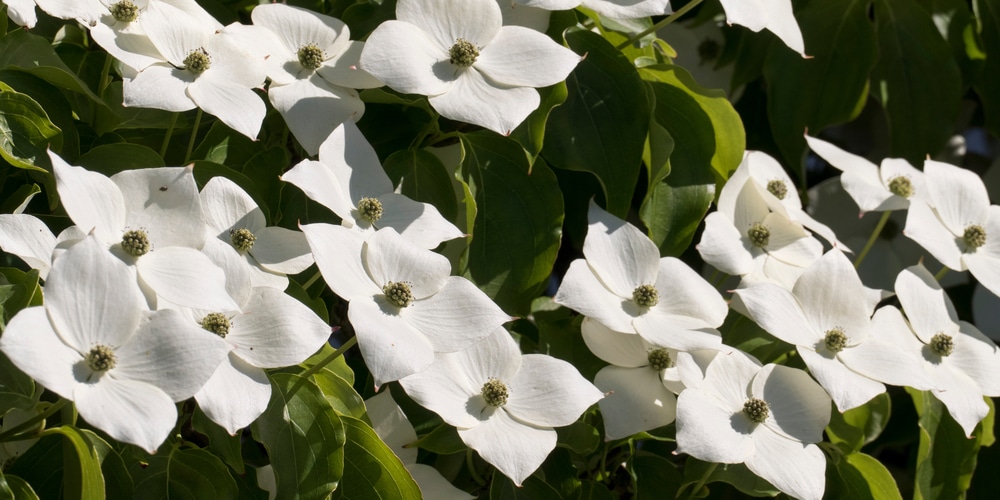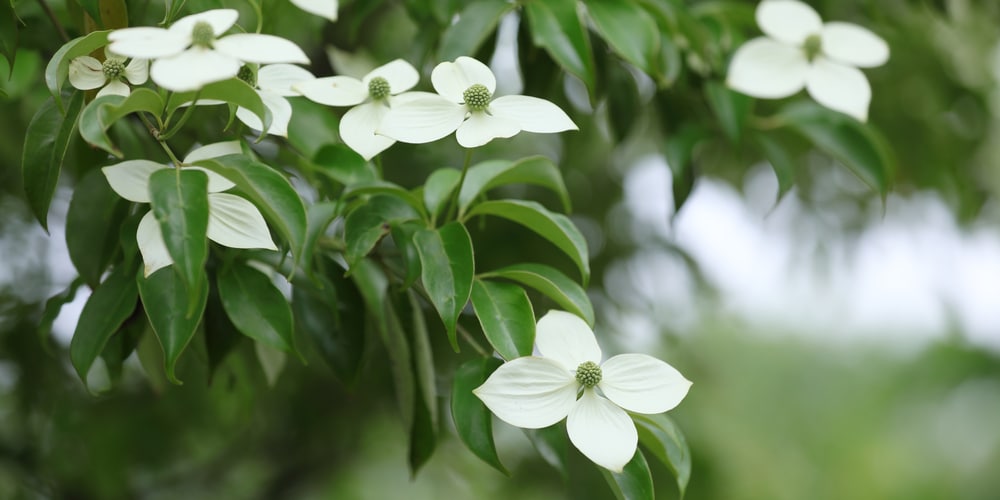Dogwoods are manageable shrubs that are among the earliest to flower, then turn red with berries in early fall. If you live in Michigan then you might be wondering if you can grow this kind of tree.
If you’re planning to add some color and natural texture to your landscape, then look no further than the dogwood tree. The deciduous plant almost never fails to show up year after year, wowing viewers with a stunning dogwood tree Michigan display throughout its lifespan.
Dogwood Blooming Time in Michigan

When do dogwoods bloom in MI? Dogwood trees can bloom as early as springtime, particularly in late March. It’s also known to produce flowers from May through early June. Once the buds form and there’s no surprise frost or dip in temperature, then you can expect a spectacular show that lasts for weeks.
You may also ask, ‘do dogwood trees grow in Michigan?’ The answer is yes. There is a dogwood species that’s native to the state, the Gray Dogwood, which means that Michigan gardeners should be able to plant one in their garden without too much trouble.
For the best results, dogwood trees should be planted where they can get morning sun and afternoon shade, and in well-drained loamy soil. Heavy medium such as pure clay is not recommended- make sure to amend with organic matter, sand, or garden mix in order to achieve a loose yet rich consistency.
Dogwoods like their soil consistently moist but not overly wet. Water more on hot summer days and warm weather, and less during fall and winter seasons. You might also want to make your soil more acidic if your dogwood exhibits yellowing leaves.
What Dogwood Trees Do Well in Michigan?
Michigan lies within USDA growing zones 4 to 6. Currently, there are two dogwood varieties which are grown in the state- Cornus kousa and Cornus florida. Among them are several species that you can plant in your yard.
Gray Dogwood
Gray dogwood is native to Michigan and distinguishes itself as a low-growing tree that can reach up to 15 feet. The smooth bark is gray inside and puts out opposite green leaves.
However, the creamy-white blooms are the star of the show and appear very early on in May. These then turn into white berries come summer, which serve as a tasty treat for birds.
The deciduous plant is hardy in zones 3 through 8 and can be planted in difficult areas in your yard or garden.
Flowering Dogwood
Another native plant to Michigan, you’ll find flowering dogwood throughout the state. Its claim to fame is the veritable shower of pink, white or reddish blooms that seem to last forever.
As far as growing is concerned you won’t have to do much since it’s already acclimated to Michigan weather.
The only time you should pay attention to your flowering dogwood is in its early years. Make sure to pick an ideal location that gets morning sunlight, and in soil that’s slightly acidic and can hold a good amount of moisture.
Mulch and amending with organic matter can support the dogwood’s growth until they reach maturity.
Flowering dogwood species work great as a landscape centerpiece or when you want something relatively easy to care for. Plus, they grow a bit slower than other shrubs and trees and only reach about 15 feet maximum height.
Kousa Dogwood
Kousa dogwood is also known as Japanese dogwood or Chinese dogwood and can thrive in zones 5 to 8. The dogwood species can reach a bit higher upon maturity at 30 feet in height and achieve a similar spread.
Michigan gardeners usually place their kousa tree in shrub borders or as a standalone specimen. What’s fascinating about this dogwood species is how they assume different forms as they grow.
When young, kousa varieties grow upright, but then they assume a horizontal and wide-spreading habit as they age.
Kousa dogwood trees flower a bit later than their flowering counterparts. The growth rate and requirements are more or less the same- give your dogwood plenty of light and remember to water it regularly for a perky year-round interest.
The dogwood show isn’t over when the flowers turn into berries- the leaves transform from red-purple to scarlet when fall comes around.
Related Article: When Do Azaleas Bloom in Michigan?

